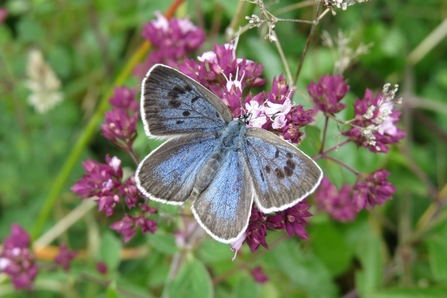Thanks to meticulous conservation management by a partnership of scientists and conservation bodies, south-west England now supports the greatest concentration of large blues known in the world.
Across the south-west, 12 new locations are being restored to flower-rich meadows suitable for large blues, taking learnings from the land management techniques that have been successful so far. Already, these places support up to a third of the UK population of large blues, up from just 7% in 2019.
The restorations are led, supervised and monitored by the Royal Entomological Society’s David Simcox and Sarah Meredith, who also design bespoke management plans for each location that has been earmarked for a reintroduction.

